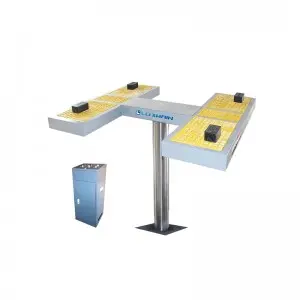Cylinders are one of the most basic and essential shapes in the world of geometry. From pencils to engines, they are used in various industries and have numerous applications. In this article, we will delve deeper into the world of cylinders, exploring their characteristics, properties, and applications.
What is a Cylinder?
A cylinder can be defined as a three-dimensional geometrical shape that has two circular ends of equal size and parallel sides. A cylinder can be classified into two types: right cylinder and oblique cylinder. A right cylinder is a cylinder in which the axis or the line passing through the centers of both circular ends is perpendicular to both of the circular ends. An oblique cylinder is a cylinder in which the axis is oblique to both circular ends. However, we will be looking at right cylinders in this article.
Properties of Cylinders
1. Surface area: The surface area of a cylinder is calculated by adding the lateral surface area and the circular top and bottom areas. The lateral surface area is calculated by multiplying the circumference of the base by the height of the cylinder. The circular area at the top and bottom of the cylinder is calculated by multiplying pi by the radius squared.
2. Volume: The volume of a cylinder is calculated by multiplying pi by the radius squared and then by the height of the cylinder.

The Astonishing World of Cylinders: A Comprehensive Guide to Understanding Them
3. Circumference: The circumference of a cylinder is calculated by multiplying pi by the diameter of the circular base of the cylinder.

The Astonishing World of Cylinders: A Comprehensive Guide to Understanding Them
Applications of Cylinders
Cylinders have numerous applications in various industries. A few of them are mentioned below:
1. Engineering: Cylinders are widely used in the engineering industry, especially in the manufacture of engines, pumps, and hydraulic systems. The engine cylinders house the pistons that convert the fuel into mechanical energy that powers the vehicle.
2. Construction: Cylinders are used in construction equipment, such as cranes and excavators. Hydraulic cylinders are used to lift and move heavy objects.
3. Writing instruments: Cylinders are one of the primary components of writing instruments such as pencils, pens, and markers.
4. Medical devices: Cylinders are used in medical devices such as oxygen tanks and respirators. They are also used in the manufacture of catheters and other medical equipment.
Real-Life Examples of Cylinders

The Astonishing World of Cylinders: A Comprehensive Guide to Understanding Them
1. Soda cans: Soda cans are one of the most common examples of cylinders. They have a cylindrical shape and a ring-pull tab to open them.
2. Drinking glasses: Drinking glasses are also cylindrical in shape. They are used to serve beverages and come in different sizes and designs.
3. Oil Rig Drilling Pipes: Cylindrical pipes are used in oil rigs for drilling purposes. The pipes are placed vertically with one pipe fitting inside another to create a drill stem.
4. Traffic lights: Traffic lights have cylindrical heads. They project the colors of green, yellow, and red lights that signal drivers to stop or go.
Conclusion
Cylinders are a fundamental geometrical shape with numerous applications. Their versatility and durability make them an essential component in industries ranging from engineering to medicine. Understanding the characteristics and properties of cylinders helps us appreciate their importance in our daily lives.quicklift car lift




